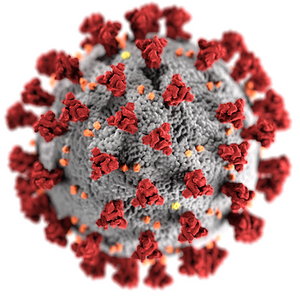
Infection with SARS-CoV-2 leads to patients developing the COVID-19 disease, which is a complex hyperinflammatory syndrome, characterised by acute respiratory distress (ARD). Aside from these severe respiratory symptoms, we now know that the virus can present in unexpected, varied, and long-lasting manners. Recent studies hint towards the amyloidogenicity of the SARS-CoV-2 spike protein (Nyström, S. et al. 2022) and indicate the presence of amyloid aggregates in plasma clots from patients suffering from Long-Covid symptoms (Pretorius, E. et al. 2021)
Researchers from the University of Lund in Sweden and the National University of Singapore previously found that spike protein binds to a range of hydrophobic molecules including bacterial lipopolysaccharide (LPS). This is a highly interesting finding considering that the Covid-19 disease is linked to hyperinflammation and LPS binding to pattern-recognition receptors, which play a key role in innate immunity, kickstarting inflammatory processes. The LPS binding sites on the spike protein were found adjacent to regions that are considered aggregation-prone, including the ones that are able to form amyloid structures, suggesting that LPS might modulate aggregation through these residues. In their most recent publication, Petrlova et al. wondered whether LPS contributes to the amyloidogenic properties of spike protein. Using available structures of dimers and trimers of spike protein, they simulated aggregation in presence of LPS and their results suggested that spike protein and lipid-A (a major component of LPS) can form stable higher-order complexes that the spike protein on its own cannot form. The researchers used Amytracker 680 to visualise aggregates formed by spike protein and found small and rounded aggregates (0.02-0.2 µm). When the spike protein was treated with LPS, these aggregates increased to form particles with up to 2 µm. Although, amyloid formation of spike protein and LPS warrants further investigation to study its relevance in vivo. However, understanding the link between spike protein aggregation and amyloid formation will have important implications for diagnostic and therapeutic approaches
Read More:
Other Resources:
- Nyström, S. and Hammarström, P. (2022) Amyloidogenesis of SARS-CoV-2 Spike Protein. J Am Chem Soc. 144(20):8945-8950.
- Petruk, G. et al. (2020) SARS-CoV-2 spike protein binds to bacterial lipopolysaccharide and boosts proinflammatory activity. J Mol Cell Biol. 12(12):916-932.
- Pretorius, E. et al. (2021) Persistent clotting protein pathology in Long COVID/Post-Acute Sequelae of COVID-19 (PASC) is accompanied by increased levels of antiplasmin. Cardiovasc Diabetol. 20(1):172.
